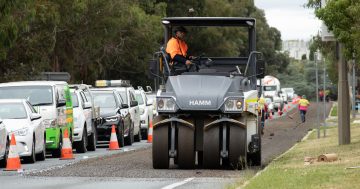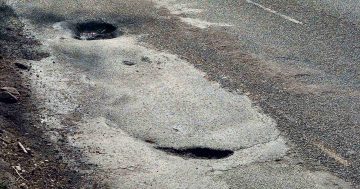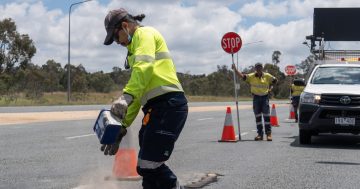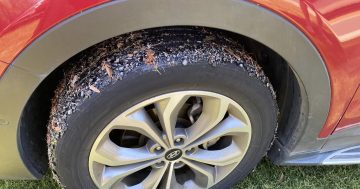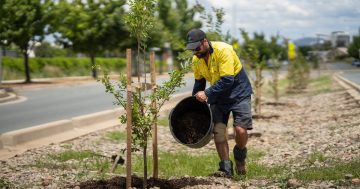
It’s been another wet and rainy year in the Territory – and the roads are suffering. Photo: James Coleman.
Funding for road maintenance will increase by 52 per cent to $153 million over the next four years as the Territory government commits to a “new strategic maintenance program”.
The government has come under fire this year for not doing enough preventative work to keep the ACT’s roads in peak condition and for taking what the Opposition calls a “lazy and reactive approach”.
The new program is based on research undertaken by the Australian Road Research Board (ARRB). It will mean an additional 268,000 square metres of proactive resealing will be completed per year and more rehabilitation work.
Asphalting of the roads will increase by 150 per cent.
Overall, 1.26 million square metres of ACT roads will be resurfaced annually, focusing on arterial and collector roads.
The Strategic Roads Maintenance Program has bumped the ACT baseline funding of $81 million by $42.6 million over four years.
The funding boost is partly thanks to the Commonwealth Government’s Local Roads and Community Infrastructure Program.
It’s unclear yet how much of the new program will be funded by each level of government.
According to the government, the new approach is expected to extend the life of the roads by an additional 20 years and will, in the long term, reduce road maintenance costs.
Minister for Transport and City Services Chris Steel said the new evidence-based program would deliver the good road conditions that Canberra drivers expect.
“This maintenance program is evidence-based and will have a greater focus on road rehabilitation and use of asphalt, as well as ensuring that we continue our focus on preventative resealing,” Mr Steel said.
“This long-term program will see smoother, more resilient roads that result in safer travel and better drivability, meaning Canberra drivers will save on fuel and vehicle maintenance.”
Australian Roads Research Board CEO Michael Caltabiano said the government has picked the “highest cost and the highest quality option” for Canberra.
“Our research looked at the condition of the ACT’s roads, and the investment and treatments required to ensure that they are well-maintained over the coming decades,” he said.
The government attributed recent road degradation and the increasing prevalence of potholes to the changing climate, heavier vehicles and greater-than-anticipated population growth that had accelerated road degradation.
“It’s no secret that roads across south-eastern Australia have taken an absolute battering over the past few years with constant La Nina weather cycles,” said Mr Steel.
“Since 2020, Canberra has continued to experience heavy and frequent rain events. In October, we experienced Canberra’s wettest month since records began, with more than 2800 pothole repairs undertaken across the Territory in that month alone.”
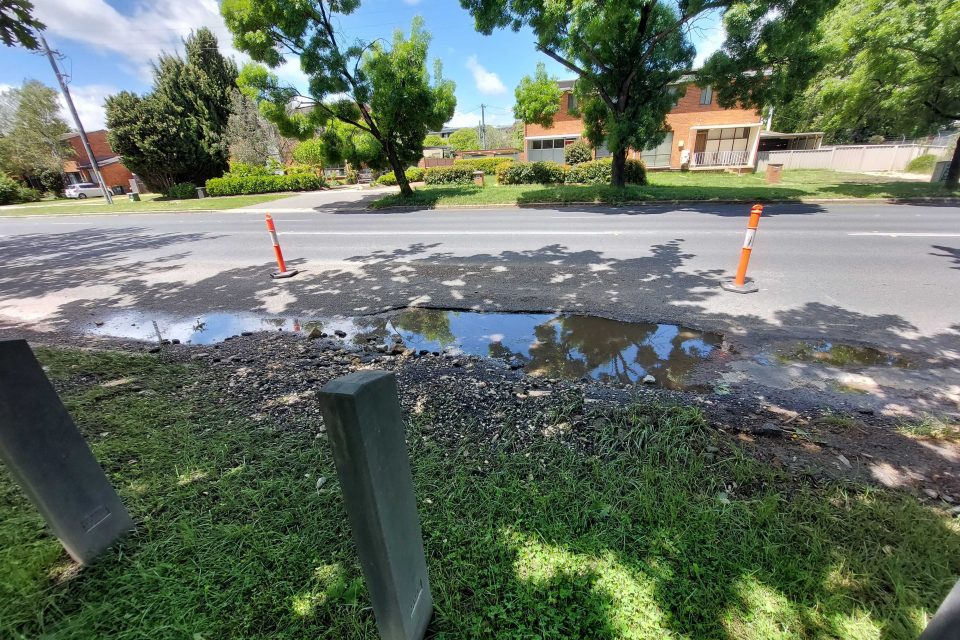
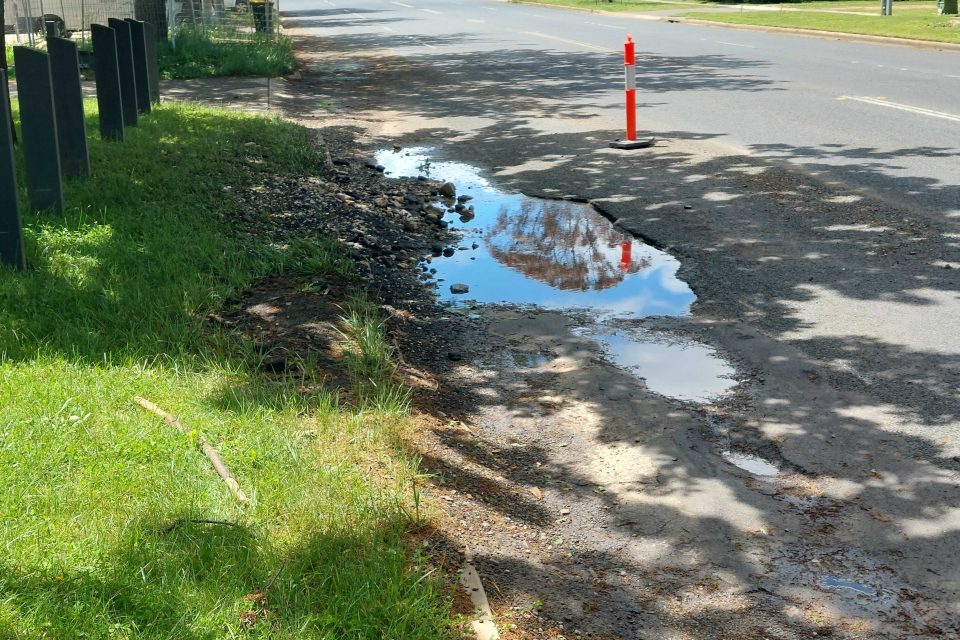
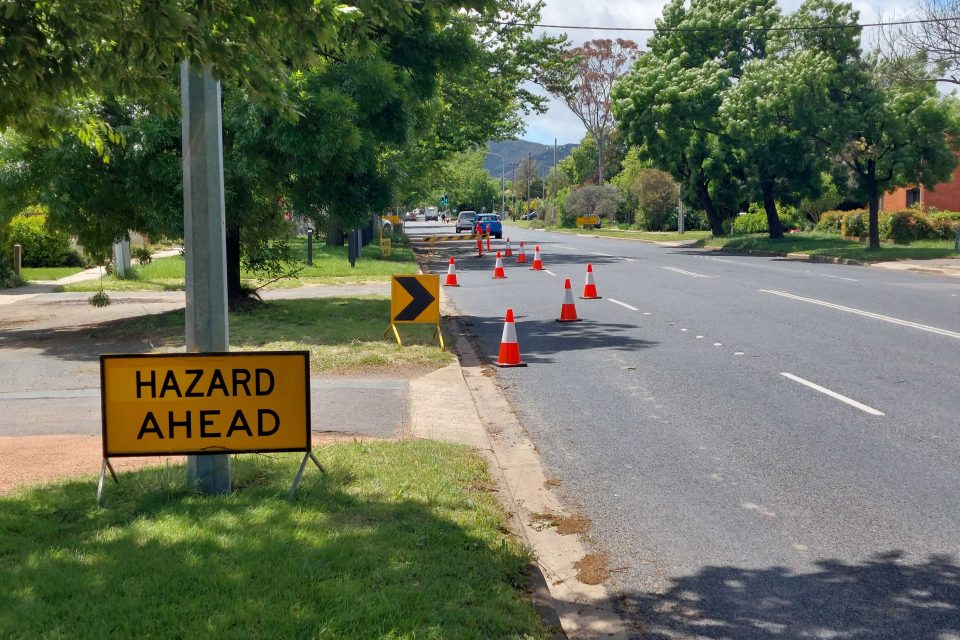
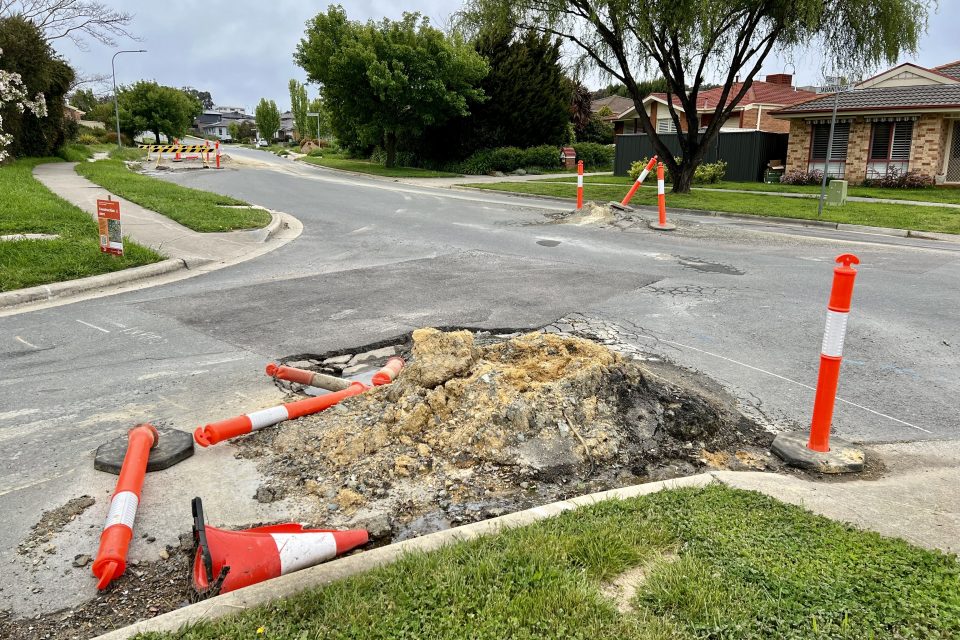

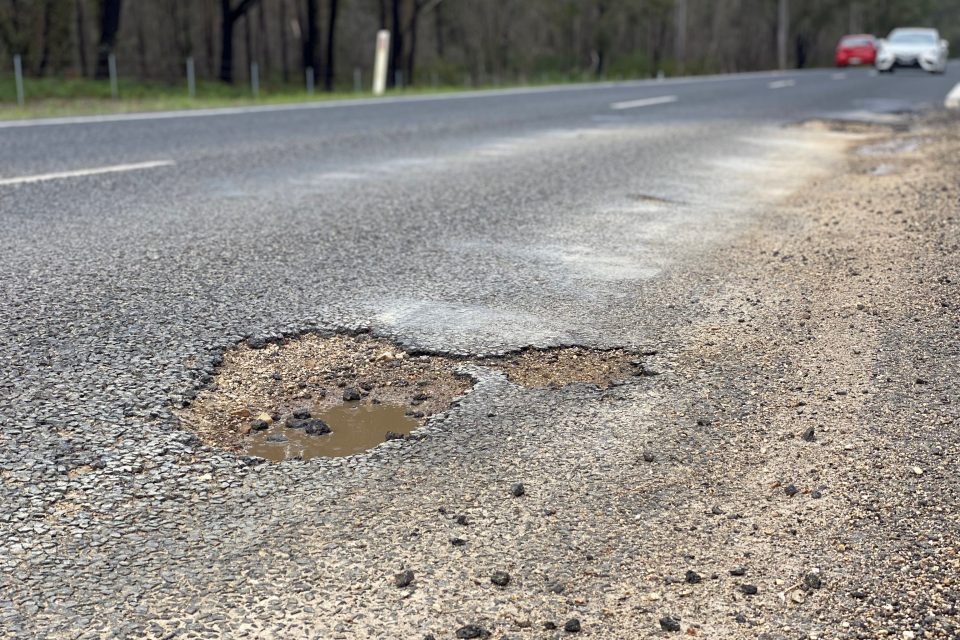



Potholes and deteriorating road conditions have been a major concern for the community in recent years, and this hit a fever pitch in the last couple of months.
Potholes open up as water seeps into cracks and erodes the base layer of the pavement.
Government repair crews have been battling to keep up with this increase in demand even as pothole repairs have soared.
In the 2021-22 financial year, Roads ACT repaired close to 7800 potholes at an average of around 650 potholes a month. In the first four months of this financial year alone, crews have already repaired more than 5000 potholes.
In estimates earlier this year, the government revealed it had already paid out over $43,000 to 50 motorists whose vehicles had been damaged by potholes in 2022. The average claim was $860.
More information on the road resurfacing program is available online and you can report a pothole or other road-related issue via Fix My Street.












